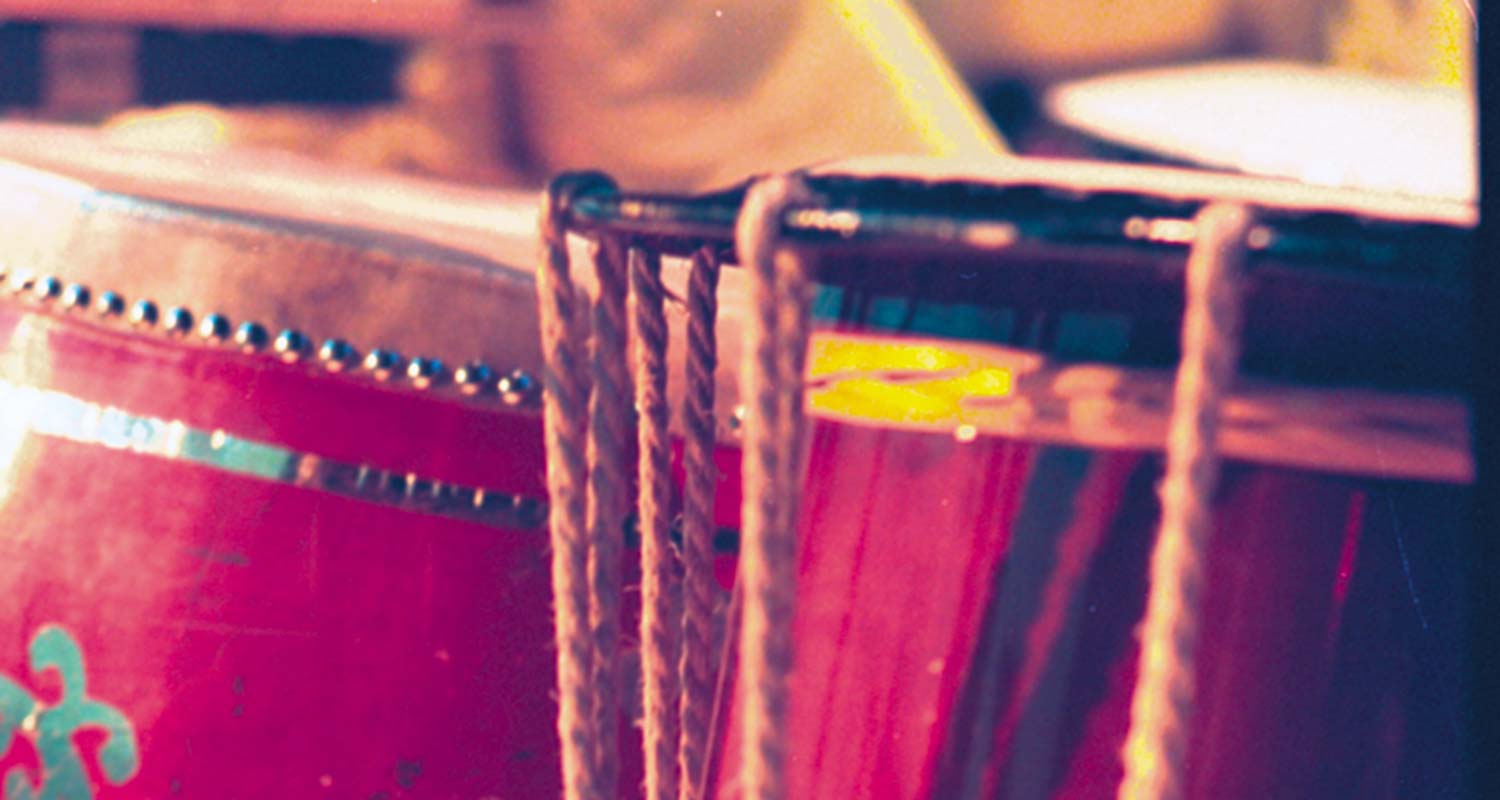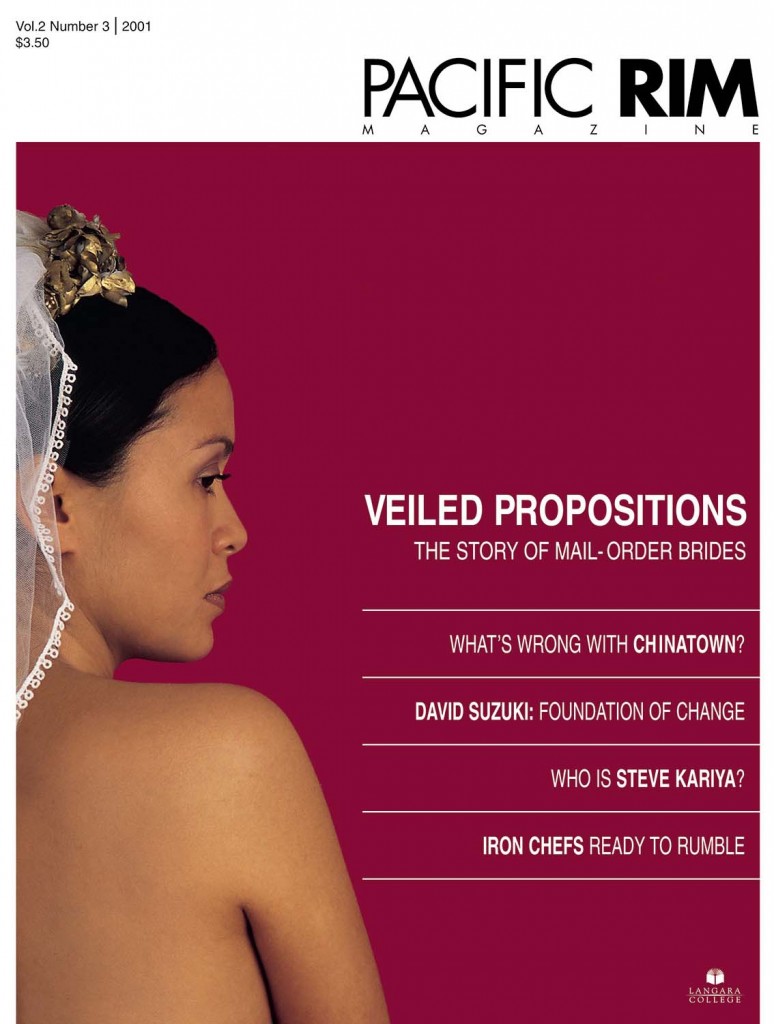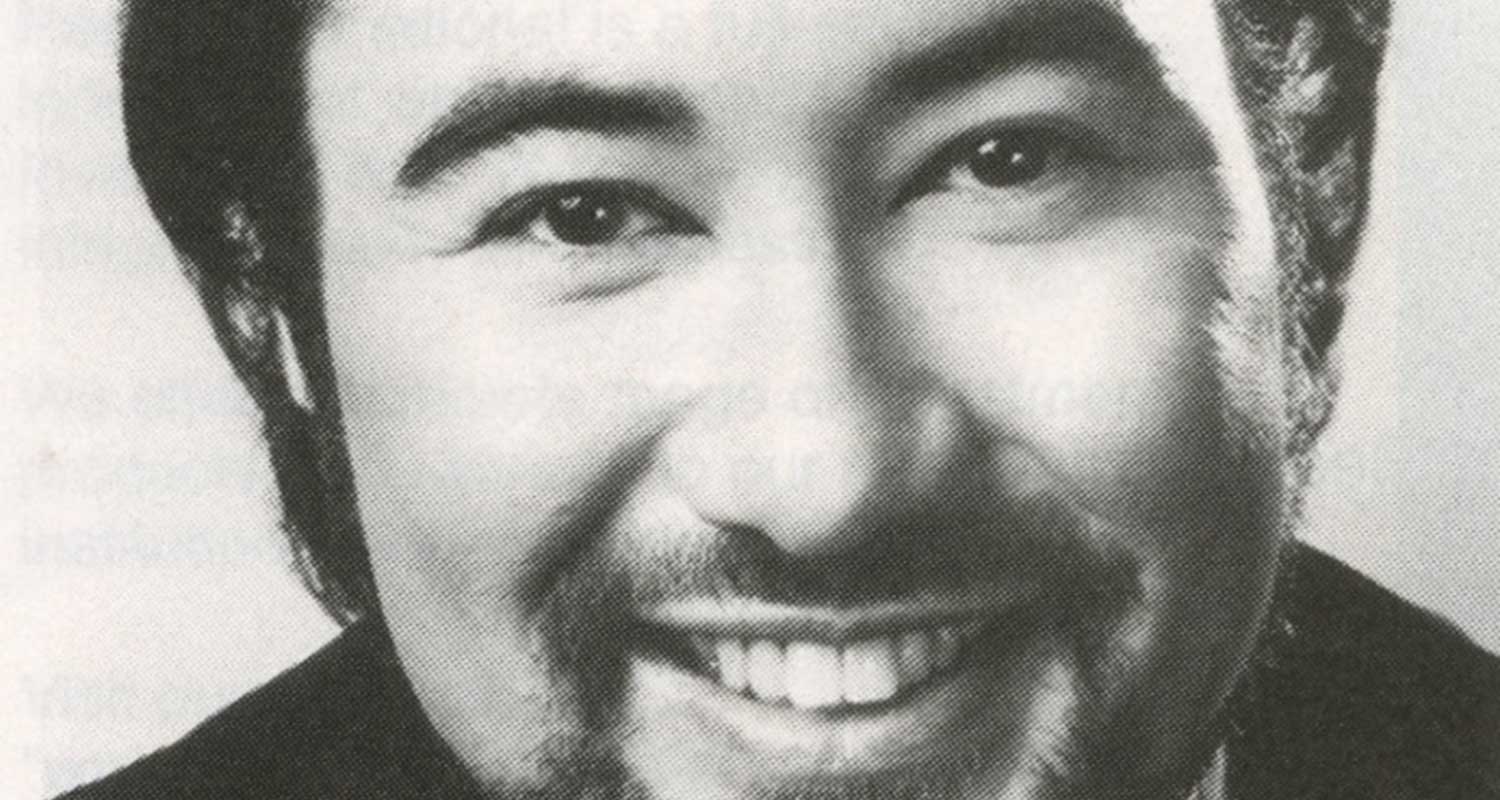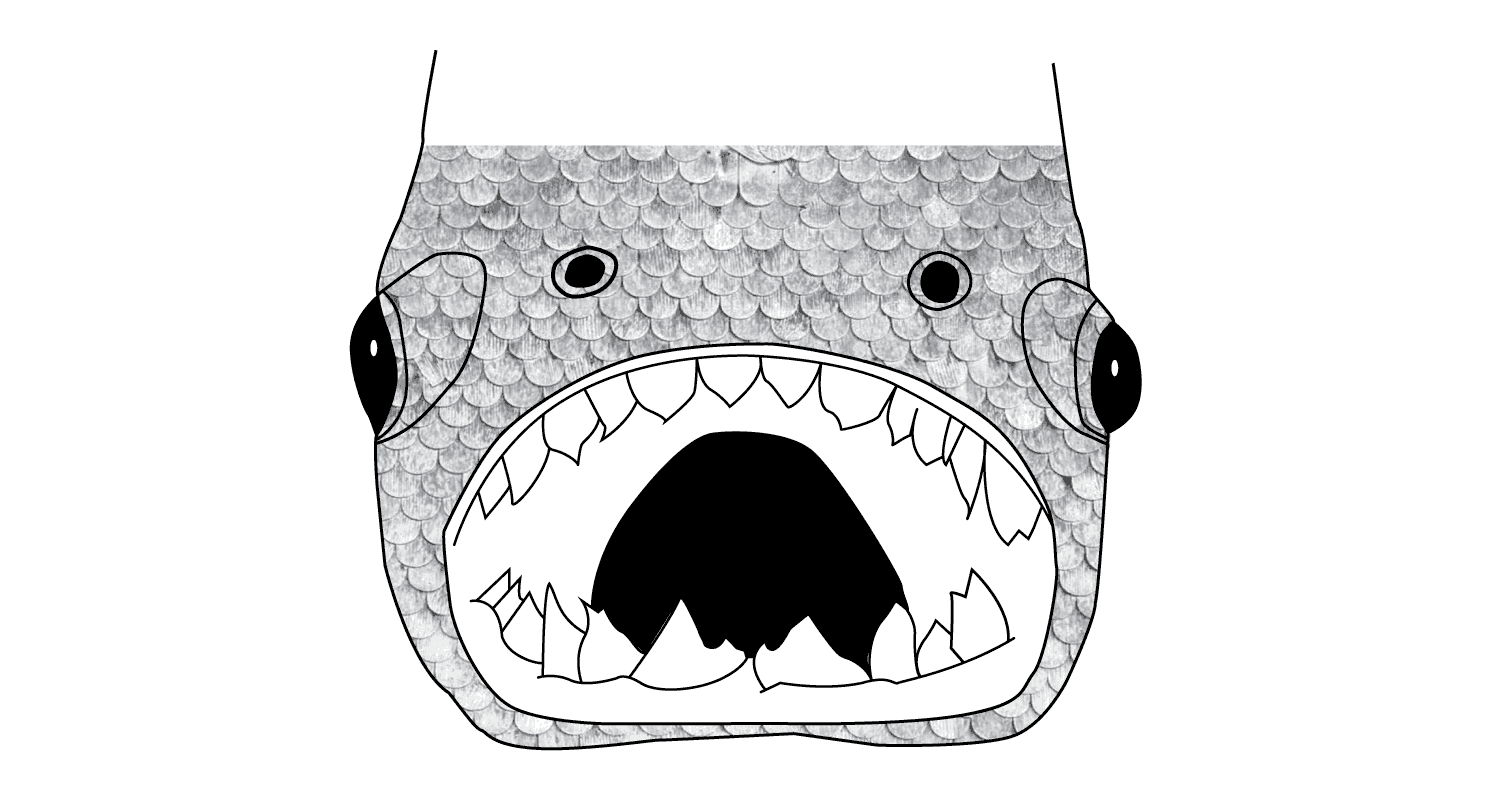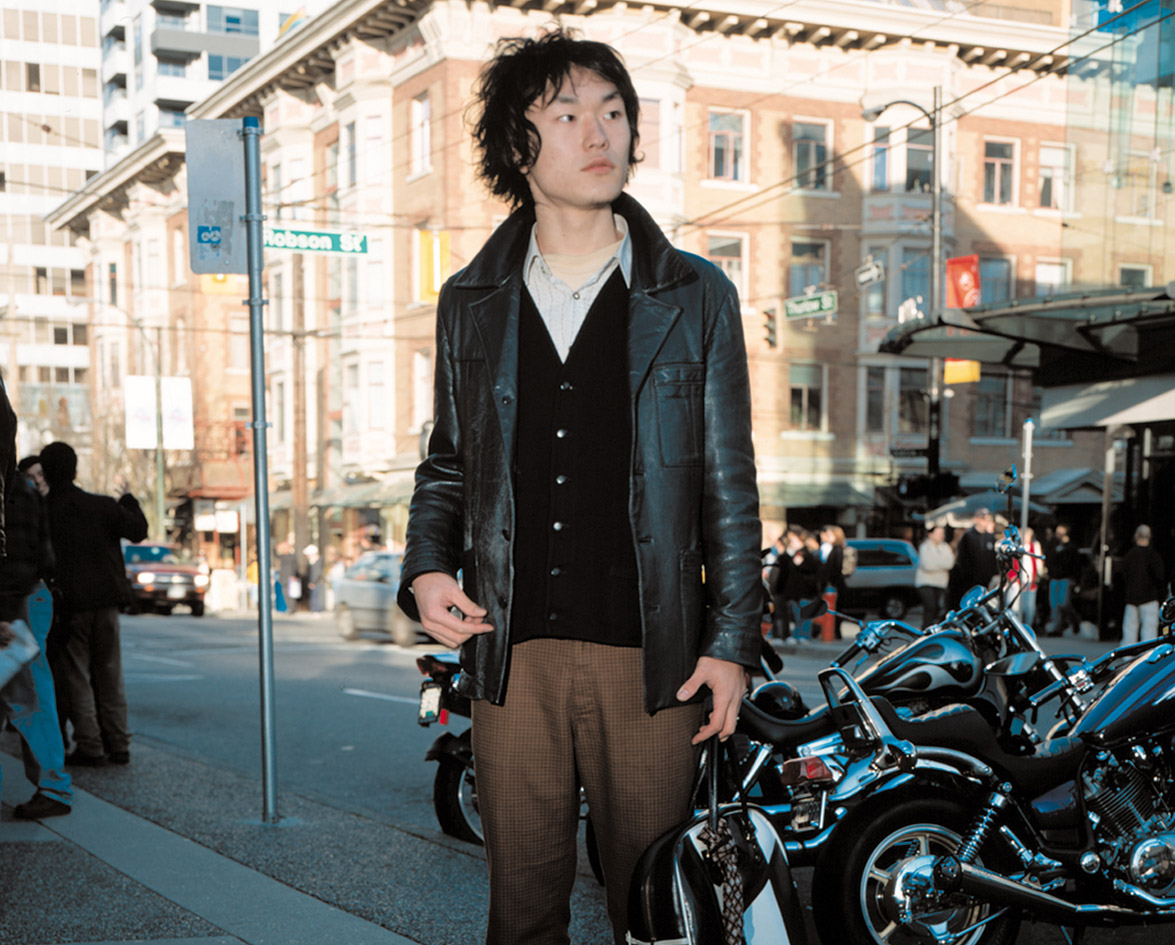Taiko awakens a mighty, primordial thunder. It rolls through you and lifts you to a place that is wild, free and spirited. It changes faces. Taiko plays with you, tells you a story and awes you with its endurance and power.
Taiko is Japanese drumming. It means big drum in Japanese. Today the style includes drums of various sizes and sounds, gongs, and occasionally a flute. In recent years it has grown in popularity. Uzume Taiko, formed in 1988, is Canada’s first professional group. Originally formed by John Endo Greenaway, it now features Boyd Seiichi Grealy and Bonnie Soon.
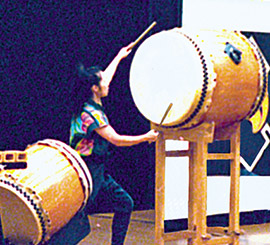
Grealy is a lean, well-muscled 32-year-old. His curly black hair and dark eyes speak of his English, Irish and Japanese ancestry. His first experience with taiko was in 1983. His parents took him to see Katari Taiko where Greenaway was a performer. After completing a degree in music at the University of Victoria, Grealy contacted Greenaway, who was now with Uzume Taiko, for an audition. In September 1991, Grealy and Soon replaced Leslie Komori and Irene Kage.
Prior to joining Uzume Taiko, Soon worked in multimedia and dance. She toured with the Paula Ross Modern Dance Company, Kokoro Dance, and the Snake in the Grass Moving Theatre. Her first exposure to taiko was also through a performance by Katari Taiko in the early 1980s. Ten years after first seeing Greenaway’s emotionally raw solo, Soon appeared with Greenway in a series of joint dance company performances. Greenaway saw her potential and asked Soon to join Uzume Taiko.
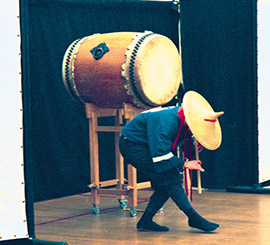
Soon, 42, is fit, lean and longhaired. An attractive woman of Chinese ethnic background, onstage she is a whirling dervish. She radiates energy and as she performs even her hair is wild with movement. In Uzume’s enhanced music CD, uzume taiko ensemble; every part of the animal, Soon’s energetic movements are harnessed to provide an unusual animation. With each click of the mouse her position alternates from crouched and ready to spring, to airborne, her ponytail a fountain of hair.
After a period of skills development Soon and Grealy joined Greenaway on stage. Currently, Uzume Taiko performs about 100 shows per year at schools around British Columbia. The group entertains students from all grade levels. For elementary school children, the focus is on storytelling. For older students, the emphasis is more on drumming. Everywhere they perform, Uzume Taiko receive letters and cards from enthralled students and teachers. Comments include: “It made my heart jump,” and, “It felt like there was an earthquake.” They ask questions like, “How do you turn the beak into a nose?”
In 1994, Uzume Taiko Ensemble was formed, an ever-changing collaboration that has included vocals, saxophone, bagpipe, cello, gong, erhu (a Chinese two-stringed bowed instrument), flute and African percussion. A quirky Canadian mix of intercultural collaboration, it has produced two CDs, Uzume Taiko Ensemble: In Your Dreams in 1994 and uzume taiko ensemble: every part of the animal in 1998.
As world music increasingly influences the Uzume Taiko Ensemble, it in turn is taking its music worldwide. Grealy and Soon made a trip to Japan in 2000. “It was very important for us to go, to understand the root of the form that we are doing and get a sense of what the pulse is right now.” They noticed stylistic differences between Uzume Taiko and the Japanese performers. Uzume Taiko used a mixture of styles, allowing a more musical approach to drumming and fluid movements between the drums. The Japanese were more grounded and powerful on the drums. They tended to have larger performing groups that played in unison using repetitive rhythms.

Soon says that in North America, Uzume Taiko’s shows normally have crowds laughing. This did not happen during their Japanese tour. A Japanese producer familiar to North American and Japanese styles commented that Uzume Taiko’s performance was too fast paced for the Japanese public. In retrospect, Grealy feels that it would have been better had they used their older presentation style. The group’s new style emerged from a need to be seamless and faster paced to appeal to the more restless European audiences.
Greenaway retired as a regular performer with Uzume in 1999. His retirement is a weight on Soon and Grealy. “It is similar to a marriage breaking up,” says Soon. They want to expand the group and to explore different performance options. Grealy and Soon are training new members, but the task is difficult and will take a couple of years. Vivien Nishi, Kimi Kajiwara and Naomi Kajiwara are all in training. Nishi is an experienced taiko drummer from Katari Taiko, while both Kajiwaras were recruited from Uzume Taiko’s drumming workshops. Grealy says, “It takes a long time to learn how to move and play at the same time and keep your breath up through a whole concert.”
The task of rebuilding is daunting but Soon and Grealy are optimistic about the group’s administrative and creative direction for the future. They will continue to explore new collaborative projects.
The curtain closes on this episode of the Uzume Taiko story. New challenges and wonderful discoveries lie ahead. Fuelled by the energy and passion of Grealy and Soon, the next chapters in the Uzume Taiko story are sure to be just as exciting.





